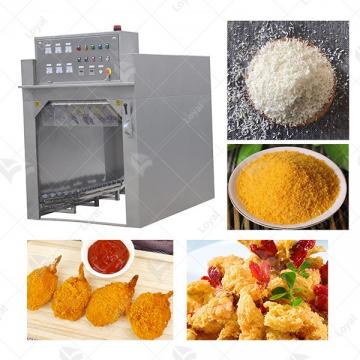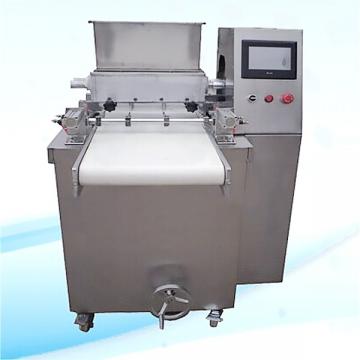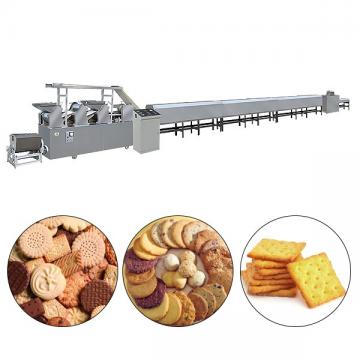
- Shandong Loyal Industrial Co.,Ltd.
- Macaroni Production Machine Instant Noodle Machine Biscuit Making Machine
Home> Processing> Pet Food Production Process

Pet Food Production Process
2025-11-18 17:30:15If you want to know more story about LOYAL brand, here can help you - https://www.facebook.com/foodmachineloyal
High-quality pet food not only needs to meet consumer demand in terms of appearance, but also requires nutritional balance to meet animal needs. Only advanced production technology and equipment configuration can meet high-quality pet food production standards. The appropriate production machine model is selected based on the customer's formula requirements and investment capacity. Domestic pet food production lines have developed rapidly in recent years, with a wide range of models available, from small-scale to large-scale engineering projects. Moreover, the technology has greatly improved compared to the past.
A typical small production line includes the following processes: crushing, mixing, extrusion, drying, flavoring, and packaging. 2-5 operators can handle the entire plant's production needs.
A typical small production line configuration can meet production needs below 1 t/h.
Dry processing is used for capacities below 200 kg/h, while wet processing is recommended for capacities exceeding 200 kg/h. With the same formula and extruder model, wet processing yields approximately 1.5-2 times higher output than dry processing.
The automated production line operates in a streamlined process from crushing, mixing, puffing, drying, spraying, cooling, to packaging.

Crushing equipment: Small-scale production uses a crusher to achieve a particle size of 60 mesh or higher.
Raw material mixing equipment: Two types of equipment are available: ribbon mixers and high-speed mixers. High-speed mixers mix materials more evenly and can appropriately add some fresh meat, achieving a better mixing effect.
Lifting equipment: A screw conveyor is used to feed the mixed materials into the puffing machine's feeding hopper, improving production efficiency and reducing labor intensity.
Extrusion Equipment: Currently, domestic extruder manufacturing processes are divided into single-screw extruders and twin-screw extruders. Single-screw extruders have a significant investment advantage over twin-screw extruders. However, due to equipment type limitations, both types of extruders work well for producing pet food with low protein and fat content. But when producing products with higher fat and protein content, or when changing product formulas (usually defined as pet food), inferior single-screw extruders will exhibit several difficult-to-solve problems (unstable material spraying, inconsistent discharge, and poor shape). This refers to the shortcomings of equipment from most domestic manufacturers under normal circumstances.

Small-scale single-screw extruders, due to numerous manufacturers, lack of core technology, fierce competition, and cost issues, cannot meet the needs of a wide range of users. Furthermore, they must be used in conjunction with wet processing to meet the final product production requirements. Small-scale single-screw extruders are also relatively rough in workmanship, and the equipment does not appear high-end in the workshop. Even if the products are of good quality, it will not be impressive enough when customers visit the production plant. The limited price advantage of the product is a factor.
Small-scale twin-screw extruders are mainly concentrated in Jinan, Shandong. These manufacturers have long been researching and producing extruded foods, and the processes for producing extruded foods are very similar to those for pet food production lines. Therefore, the equipment is manufactured to food-grade standards, resulting in a very attractive appearance. After more than ten years of development, these manufacturers can provide a complete pet food production line configuration and meet production needs. The technology for using the equipment is also quite mature; with skilled operators, there are no problems with equipment operation and product production.
During operation, the twin-screw extruder uses a double-helix feeding system, resulting in smoother and more stable feeding. It avoids clogging at the feed end, leading to very consistent product quality. This characteristic makes it an ideal choice for processing pet foods with high fat and protein content, or those containing added fresh meat. Furthermore, cleaning the twin-screw extruder after shutdown is very convenient, as the screws have a self-cleaning function, significantly reducing cleaning time and labor intensity compared to single-screw extruders, and eliminating the need for screw disassembly.
In terms of differences in aquatic feed production, twin-screw extruders offer the following advantages over single-screw extruders: Twin-screw extruders can produce high-energy formulations with a fat content of 11-13% (overseas data suggests up to 17%), while single-screw extruders generally do not exceed 6-8%. The unique twin-helix conveying capability of twin-screw extruders allows for the control of producing floating, sinking, and slowly settling feeds when producing pellets with a diameter of 2mm or less.

Drying equipment: The drying process is also a crucial step in production. Energy consumption directly impacts product cost. High-quality drying chambers have very high heat utilization rates. Small-scale models often use multi-layer belt-type electric heating drying chambers or fuel/gas ovens. Small dryers have a simple structure and consume more energy compared to large feed drying chambers, but their investment cost is lower. High-quality drying chambers have low energy consumption, low losses, and prevent leaks. Inexpensive drying chambers often have thin insulation layers, inconsistent materials, affecting product quality, and may also involve cost-cutting in unseen areas. When selecting equipment, pay close attention to the oven. Small details reveal a manufacturer's workmanship and directly impact the equipment's performance during production.
Regarding spraying: There are various mixing and seasoning equipment available, including double-drum seasoning machines, single-drum seasoning machines, octagonal drums, ribbon mixers, and twin-shaft paddle mixers. Choose the one that meets your production process and mixing requirements. Select the appropriate seasoning equipment based on your formula's spraying requirements.
This article only provides reference and a brief introduction to the advantages of various equipment for companies purchasing pet food equipment. It should not be used as a basis for determining equipment selection technical parameters.

Reference
The following are five authoritative foreign literature websites in the field of Industrial food machinery:
1. Food Engineering Magazine
Website: https://www.foodengineeringmag.com/
2.Food Processing Magazine
Website: https://www.foodprocessing.com/
3.Journal of Food Engineering
Website:https://www.journals.elsevier.com/journal-of-food-engineering
4. Food Manufacturing Magazine
Website:https://www.foodmanufacturing.com/
5. International Journal of Food Science & Technology
Website:https://onlinelibrary.wiley.com/
 Commercial Japanese Panko Bread Crumb Grinder Machine
Commercial Japanese Panko Bread Crumb Grinder Machine Japanese Bread Crumbs Processing Line
Japanese Bread Crumbs Processing Line Automatic Cookies Making Machines
Automatic Cookies Making Machines Fully Automatic Biscuit Making Machines
Fully Automatic Biscuit Making Machines